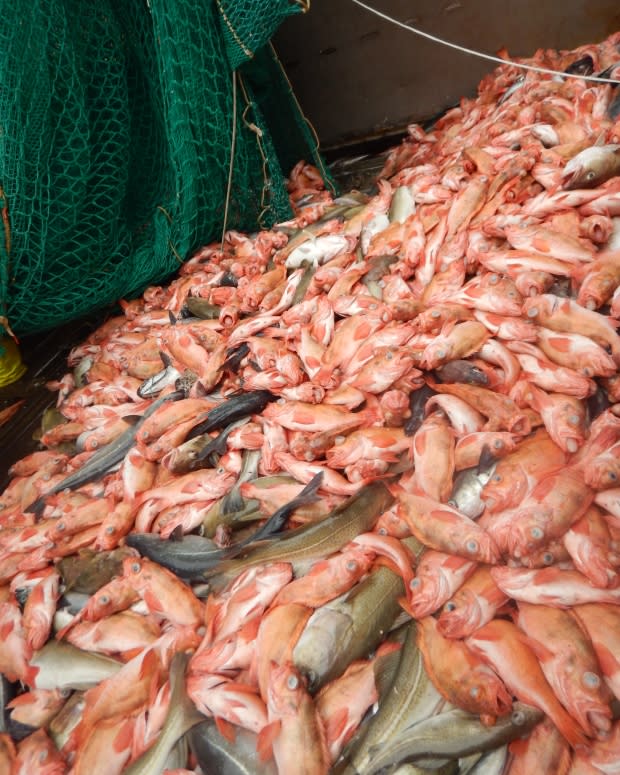Nova Scotia looks to keep redfish quota as other provinces want in
A Nova Scotia seafood company is urging the federal government to wait several years before starting a large-scale commercial harvest for redfish in the Gulf of St. Lawrence.
Also known as ocean perch, the species has made a remarkable comeback after a 25-year moratorium.
"This biomass is huge. It's probably the largest in history," said Jan Voutier of Louisbourg Seafoods, a Nova Scotia redfish harvester and processor.
It's believed 3.5 million tonnes of redfish are in the gulf today, setting the stage for a looming interprovincial conflict in Atlantic Canada over who gets a piece of the action.
"All of a sudden, everyone wants to rush in and get the pot of gold, as it were," said Keith Colwell, Nova Scotia's fisheries minister.
"Where were they when all this started?"

Nova Scotia companies are currently entitled to the majority of the redfish quota in the gulf — a dominance that did not matter much when redfish was under a moratorium. Now other provinces want in.
DFO said the licences will not confer permanent access, but Voutier fears what it could mean for Nova Scotia in the future.
"We are conscious of everybody's needs in other provinces, but at the same time we have businesses to run," said Voutier.
"Nova Scotia has been a major player in this industry for a long time and whenever we lose as an industry, Nova Scotia loses also."
N.S. insists current allocations stay
Colwell said Nova Scotia companies like Louisbourg Seafood have waited years for redfish to come back all the while providing science surveys to the federal Department of Fisheries and Oceans.

The fight over allocations will take place next year, but Colwell said he expects the current numbers to be maintained.
"These companies waited a long time. They have been very patient. They have been making sure the resource is there."
Is it ready for harvest?
Voutier said redfish in the gulf are still four to five years away from a harvestable size at 33 centimetres or larger.
DFO considers redfish commercial at 22 centimetres, meaning much of the biomass is at least approaching or even at harvestable size.
Louisbourg Seafood recently pulled a boat out of the gulf because 50 per cent of the redfish were below 22 centimetres.
Voutier said there is no demand for smaller fish, which are worth less than half the larger ones to harvesters.
"We have great concerns this should be handled very cautiously."
A Newfoundland redfish project
Earlier this month, Ottawa awarded $700,000 from the Atlantic Fisheries Fund to the Fish, Food and Allied Workers Union for fishing trials for redfish.
The Newfoundland and Labrador-based union said its harvester-led project will look for ways to avoid catching small fish.
The redfish stock is actually made up of two species, with one more abundant than the other.
FFAW-Unifor has said it wants to demonstrate it can target the more abundant species.
"This project is providing us with an unprecedented opportunity to build a sustainable fishery from the ground up that has the potential to provide substantial economic benefits for communities in Newfoundland and Labrador," union president Keith Sullivan said in a news release.
But Voutier sees the union's initiative and others differently.
"This is just not good for the future of the industry. It's too soon and it's too much effort."

